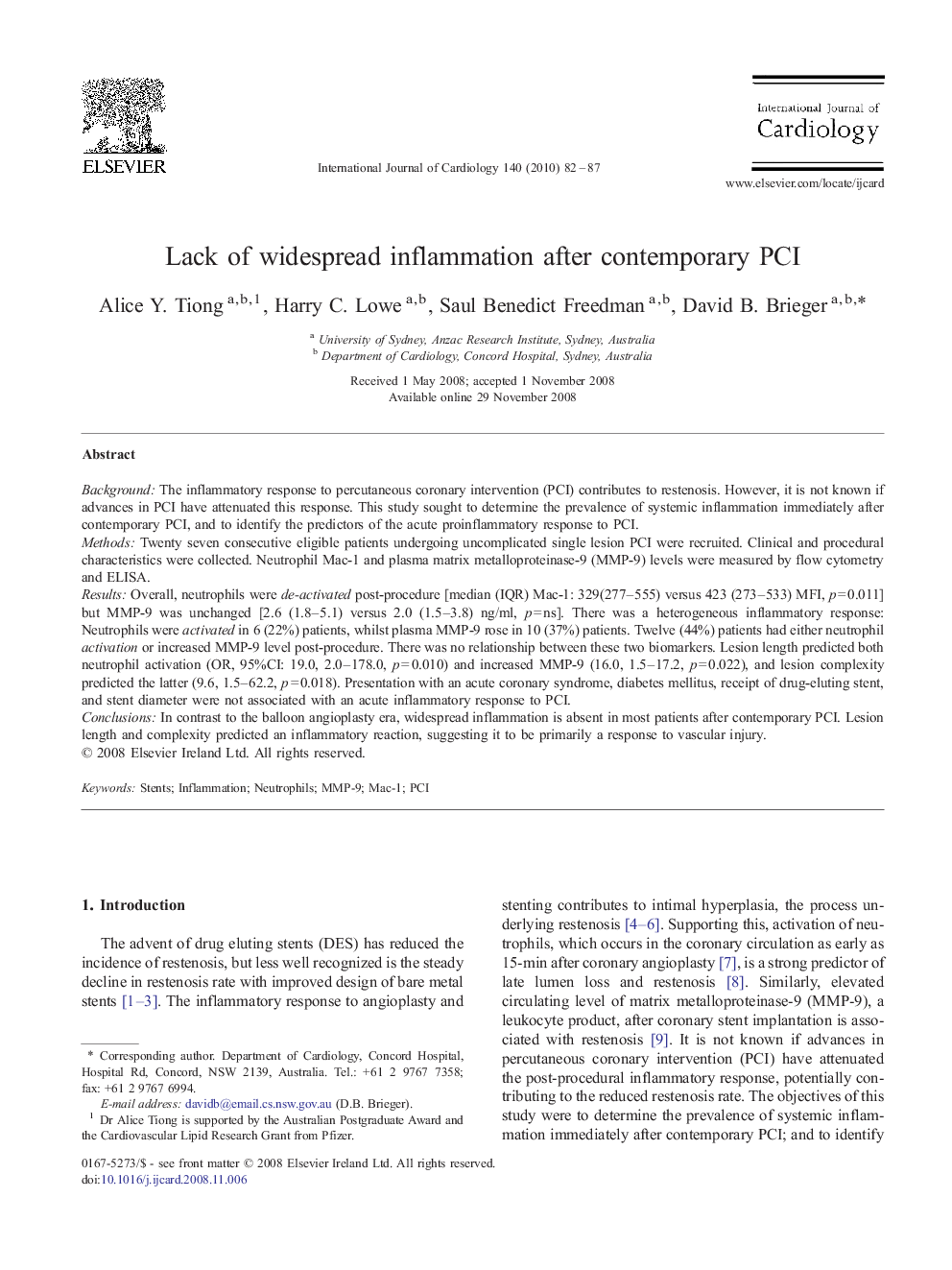| کد مقاله | کد نشریه | سال انتشار | مقاله انگلیسی | نسخه تمام متن |
|---|---|---|---|---|
| 2932126 | 1576305 | 2010 | 6 صفحه PDF | دانلود رایگان |

BackgroundThe inflammatory response to percutaneous coronary intervention (PCI) contributes to restenosis. However, it is not known if advances in PCI have attenuated this response. This study sought to determine the prevalence of systemic inflammation immediately after contemporary PCI, and to identify the predictors of the acute proinflammatory response to PCI.MethodsTwenty seven consecutive eligible patients undergoing uncomplicated single lesion PCI were recruited. Clinical and procedural characteristics were collected. Neutrophil Mac-1 and plasma matrix metalloproteinase-9 (MMP-9) levels were measured by flow cytometry and ELISA.ResultsOverall, neutrophils were de-activated post-procedure [median (IQR) Mac-1: 329(277–555) versus 423 (273–533) MFI, p = 0.011] but MMP-9 was unchanged [2.6 (1.8–5.1) versus 2.0 (1.5–3.8) ng/ml, p = ns]. There was a heterogeneous inflammatory response: Neutrophils were activated in 6 (22%) patients, whilst plasma MMP-9 rose in 10 (37%) patients. Twelve (44%) patients had either neutrophil activation or increased MMP-9 level post-procedure. There was no relationship between these two biomarkers. Lesion length predicted both neutrophil activation (OR, 95%CI: 19.0, 2.0–178.0, p = 0.010) and increased MMP-9 (16.0, 1.5–17.2, p = 0.022), and lesion complexity predicted the latter (9.6, 1.5–62.2, p = 0.018). Presentation with an acute coronary syndrome, diabetes mellitus, receipt of drug-eluting stent, and stent diameter were not associated with an acute inflammatory response to PCI.ConclusionsIn contrast to the balloon angioplasty era, widespread inflammation is absent in most patients after contemporary PCI. Lesion length and complexity predicted an inflammatory reaction, suggesting it to be primarily a response to vascular injury.
Journal: International Journal of Cardiology - Volume 140, Issue 1, 1 April 2010, Pages 82–87